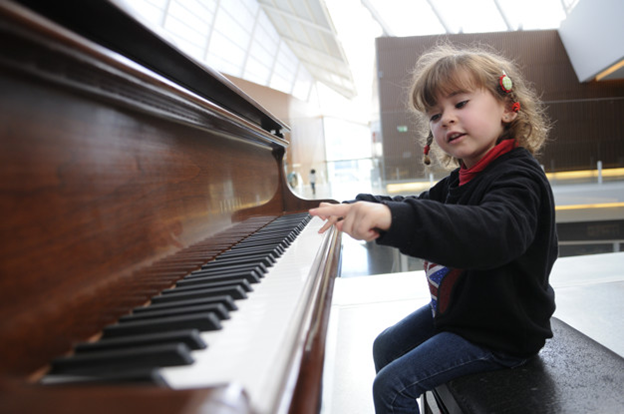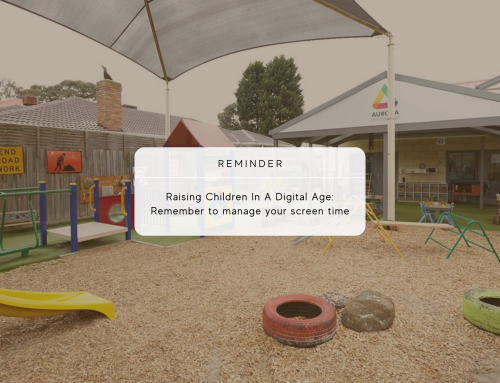There are several reasons that families encourage young children to participate in music-based activities. Music has been found to make children calmer, increase their ability to focus and also build on their social skills. But, did you know that engaging with music in early childhood can also lay the foundation for your child’s knowledge of maths?
While modern-day research has explored the connection between math and music, the idea has been explored for centuries. Greek philosophers like Aristotle and Plato believed that there exists a strong connection between music and mathematics.
What’s more, the legendary mathematician Pythagoras, often referred to as the “father of numbers” and “father of harmony”, discovered the overtone series, an inherent property of physics and mathematics within music, some 2500 years ago!
Here’s a look at four ways how music is linked to learning mathematics:
1. Music beats and mathematical divisions have a close resemblance
Music is full of fractions. Each piece of music is divided into rhythms where each rhythm is divided into measures. Look at the time signature and you will see it acts like a fraction that has one number at the top and one at the bottom, which is called a note. Those who can accurately comprehend the value of notes and beats in music can easily understand the concept of fractions in math well.
While young children may not necessarily start with the concept of notes, certain activities like asking children to tap their foot or clap their hands at certain intervals while listening to a song is a great way to make them understand the concept of a quarter, half, whole etc.
2. The frequency of sound in music is related to math
Pythagoras inferred that strings of varying lengths produced different tones. He found that pleasing sounds (harmonics) were produced when strings of certain ratios were plucked and discovered that a shorter string produces higher pitch while a longer string produces shorter pitch.
For instance, wrap elastic bands of varying lengths and thicknesses over a cardboard paper and ask children to observe what happens when they strum the bands. You can also use some bottles or glass tumblers with different amounts of water and ask children to tap a spatula over it to explore different sounds. They will find the sound changes intriguing when they strum elastic bands of different lengths or how varying volumes of water in the bottles produces different sounds. Activities as these help young children understand the concept of frequency in a fun way.
3. They both are dominated by patterns
Songs comprise of pitches, notes and scales which all act like patterns to create rhythms. Humans are more akin to develop likening to music that has a repetitive pattern. Research depicts that some music pieces become more popular because of their mathematical structure.
In mathematics, patterns are used to calculate or solve a problem. For instance this arithmetic sequence: 2, 4, 6, 8, 10, 12 …. has a common difference of 2 and it progresses by adding the common difference.
Children are formally introduced to the mathematical concept of patters in primary school. However, pattern recognition is built from an early age as children organise objects into recurring patterns. Listening to and engaging with music will help children subconsciously become more aware of patterns.
4. Both are related to enhancing the spatial-temporal reasoning and cognitive learning
Spatial-temporal cognition is the ability of an individual to visualize objects in space and solve multi-step problems. Young children who have used musical instruments have been found to perform better in spatial-temporal reasoning and cognitive learning, (cognitive skills implies pattern recognition, visual processing, sustained attention, working memory) which are important skills for understanding several mathematical operations.
The methodology used to learn rhythm in music is relevant for comprehending decimals, fractions and percentages in mathematics. Learning music is thus a slow, methodological process. It involves discipline and a lot of practice that strengthens the mental-physical connection in children, which in turn help build strong math skills in children.
Let your child’s intellect soar
Learning music is associated with increased academic performance and improved social and emotional skills. Children learn to develop a sense of empathy with others as well, making them a well-rounded individual. Music also has the power to uplift, inspire and relax children while alleviating their stress.
Registering your children for music lessons will have various positive effects. Let your children learn voice or any instrument imaginable and see how it benefits them in various areas of learning and development.
At Aurora Early Education, we understand that music plays a major role in the physical, emotional, social and intellectual growth of children. To support these key areas of childhood development, we incorporate music into our program in a variety of ways. We have musical instruments in each of our rooms and children are welcome to use them throughout the day. Our educators bring music into everyday experiences through singing, dancing and listening to songs. We also have instrumental music playing through the centre, ensuring that our children, staff and families are in a soothing environment.
Have a trip to our centres:





